Story at a glance:
- Indoor air is frequently polluted by residential combustion, the circulation of small particulate matter, and VOC off-gassing.
- One of the most effective ways to improve indoor air quality is by investing in a HEPA air purifier.
- Exhaust fans, regular HVAC filter replacement, dehumidifiers, and routine cleaning can all help improve indoor air quality.
Clean air is something many of us take for granted. But is the air you’re breathing actually clean? Studies conducted by the EPA suggest indoor air can contain two to five times more pollutants than outdoor air—a serious issue given that the average American spends 90% of their time inside.
Poor indoor air quality costs the US economy close to $10 billion annually, either in the form of reduced worker productivity, sick days, or any of the other detrimental impacts arising from indoor pollution, according to the Indoor Air Hygiene Institute (IAHI).
Let’s explore some of the most common causes of interior air pollution and ways to improve indoor air quality (IAQ).
What Causes Indoor Air Pollution?

All Going Street Commons homes feature open floor plans, modern, Energy Star-certified appliances, abundant natural lighting, and building systems and finishes to help ensure healthy indoor air quality. Photo by Jillian Lancaster
Before we get into the methodology of how to improve indoor air quality, let’s talk about what causes indoor air pollution in the first place, as this helps us better understand why certain methods are more effective than others.
Some of the most common causes of indoor air pollution include:
Particulate Matter, Allergens & Mold
Particulate matter is sort of a catch-all term for the microscopic particles of solid or liquid matter suspended in the air. When referring to indoor air pollution, particulate matter typically encompasses dust, dirt, smoke, soot, and pollen, all of which can irritate the eyes, nose, and throat. Very fine particulate matter is even more detrimental, as it can penetrate the deepest parts of the lung and even enter the bloodstream.
In a similar vein, allergens—which includes pollen and dust as well as dust mites, pet dander, and mold—are also common indoor air pollutants that cause respiratory upset in occupants, albeit at varying levels of severity. Of these allergens, mold (and by extension, mildew), is perhaps the most universally damaging and can cause coughing, sneezing, wheezing, watery eyes, difficulty breathing, as well as other symptoms, even in people who do not suffer from allergies or existing respiratory conditions.
Volatile Organic Compounds
Volatile organic compounds, or VOCs, are chemicals that possess a high vapor pressure at room temperature and off-gas molecules into the surrounding air over time. Exposure to VOCs can cause eye, nose, and throat irritation, as well as nausea, dizziness, headaches, and difficulty breathing.
When present in high concentrations or for long periods of time, VOCs can cause or exacerbate respiratory illnesses, damage the central nervous system, and even cause certain cancers.
Residential Combustion
Indoor air also becomes polluted by way of residential combustion, or the burning of various substances in the home, particularly fuel. Two-thirds of US households burn some sort of fuel—be it wood, natural gas, propane, heating oil, etcetera—to heat their home and water, cook their food, or dry their clothes. At the micro level residential combustion also includes such activities as burning candles or incense and smoking.
Residential combustion produces harmful emissions—most notably carbon monoxide but also benzene, nitrogen dioxide, and others—that negatively impact both human and environmental health.
Radon & Carbon Monoxide
While it doesn’t affect all households, radon—a naturally occurring radioactive gas—can be a serious detriment to respiratory health when present. An odorless, colorless, tasteless gas, radon is naturally released from the earth and normally dissipates soon after, leaving zero negative impact on an area’s overall air quality.
Radon becomes a problem when enclosed structures are built atop sites where the gas is present, as it can enter buildings through foundations, basement floors, cracks in walls, etcetera and build up until it reaches dangerous levels. Long-term exposure to radon is the second-leading cause of lung cancer in the United States.
Similarly carbon monoxide is an odorless, colorless gas that isn’t found in high concentrations in every single building, but all buildings that rely on some form of fuel combustion for operating purposes are at risk of carbon monoxide pollution. Exposure to carbon monoxide can cause dizziness, fatigue, headaches, chest and muscle pain, shortness of breath, amongst other symptoms—and long-term exposure can even result in death.
15 Ways to Improve Indoor Air Quality
There are a variety of both low-cost and moderately expensive ways in which indoor air pollution can be addressed.
Here are 15 ways to improve the indoor air quality of your home or office.
1. Purchase a HEPA Air Purifier

Photo by Matthew Millman
One of the single most effective ways to improve indoor air quality is to invest in a high-quality, portable air purifier that uses a high efficiency particulate absorbing (HEPA) filter. HEPA filters have a MERV rating of at least 17 and are able to remove over 99% of particulates measuring 0.3 microns and larger from the air.
Air purifiers that use a HEPA filter are capable of capturing pollen, dust, dirt, moisture, as well as some bacteria, viruses, and submicron liquid aerosols greater than 0.3 microns in size. Particles smaller than 0.3 microns may still be captured by a HEPA filter via the process of diffusion, albeit with less efficacy.
Air purifiers are available in a range of operating capacities, with some designed to purify the air in a single room and others able to purify even a 3,000-square-foot home. Be sure to follow manufacturer recommendations with regard to how often the filter needs to be changed.
2. Invest in a Purifier that Neutralizes Pathogens

ActivePure purifiers transform ambient humidity into ActivePure molecules that neutralize pathogens, fungi, mold, bacteria, pollen, and VOCs. Photo courtesy of ActivePure
HEPA air purifiers are an excellent means of improving indoor air quality, but they aren’t infallible, either—especially when it comes to reducing the spread of airborne pathogens, which typically fall in the 0.1 to 0.2 micron range. To prevent the spread of mold, germs, and other disease-causing microorganisms, invest in an ActivePure purification unit.
ActivePure uses technology that was originally developed in conjunction with NASA as a means of recreating the natural photolysis process—that is, the decomposition of molecules by the action of light—indoors. “ActivePure works against the [molecule’s] outer coats punching holes in the protective shell and inactivates the pathogen in the same way sunlight does, enabling it to work against the whole spectrum of pathogens,” Dr. Deborah Birx, chief medical and science advisor at ActivePure and former White House Coronavirus Task Force coordinator, previously told gb&d.
In practice this technology transforms ambient humidity in indoor environments into ActivePure molecules that then circulate through the indoor space, neutralizing bacteria, fungi, mold, pollen, pathogens, and VOCs. Once switched on the ActivePure device fills a space with ActivePure molecules in seconds, removing harmful pollutants from the air without the need for chemicals or additional ventilation and using minimal energy.
3. Use Low-VOC Products
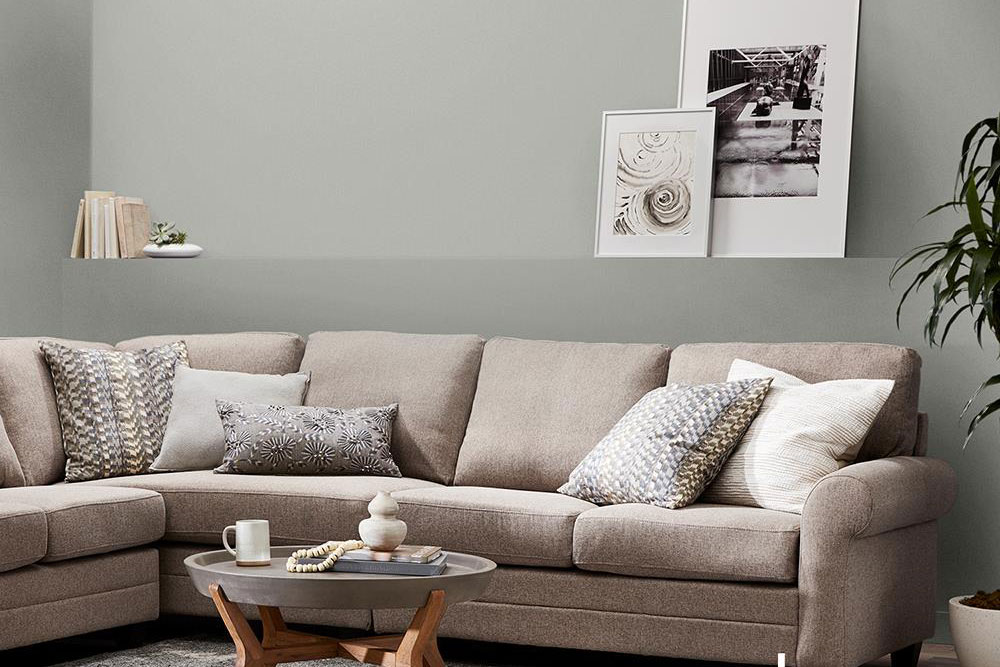
Valspar’s Signature paint is one of this brand’s low- and no-VOC offerings. Photo courtesy of Valspar
Using low-VOC products can help improve air quality and occupant health in the long run. Many household products emit VOCs, including paint, carpeting, cleaning agents, wood preservatives used in furniture, and even some hobby supplies.
Fortunately there are many low-VOC alternatives for most products, in which the amount of VOCs they emit is considered safe by the EPA. Paint, for example, is one of the largest and most common sources of VOCs in buildings. Many companies, like Valspar, offer low-VOC paint products. Non-flat paints are considered low-VOC if they contain fewer than 100 grams of VOCs per liter, while flat paints are deemed low-VOC if they contain fewer than 50 grams per liter.
Chemical cleaning agents are another common source of VOCs. Replacing strong, synthetic cleaners with non-toxic, natural cleaners that are low in VOCs can help improve indoor air quality and prevent the headaches, dizziness, eye and throat irritation, and vision problems associated with exposure to VOCs.
4. Open Your Windows

Sharp House was designed to be as economical as possible in construction, with exposed cast-in-place concrete and large glass exposures to the north and south to allow for solar gain and cross ventilation. Photo courtesy of Marc Thorpe Design
Indoor air often contains more pollutants than outdoor air, which means opening your windows—even for just 10 minutes a day—can help improve indoor air quality by allowing fresh air to replace stale air, removing or diluting airborne pollutants to a safe level. This is the core concept behind cross ventilation, or the process by which windows on either side of a building are opened to allow prevailing winds to enter, circulate throughout the interior, and then exit out the other side.
That said, opening your windows is not recommended if you live somewhere with poor air quality, like a dense urban center or near a busy roadway, nor is it wise to open windows on days where code orange or code red air quality alerts have been issued. Doing so will worsen indoor air quality and put occupants at a greater risk for developing respiratory problems.
5. Install & Use a Range Hood
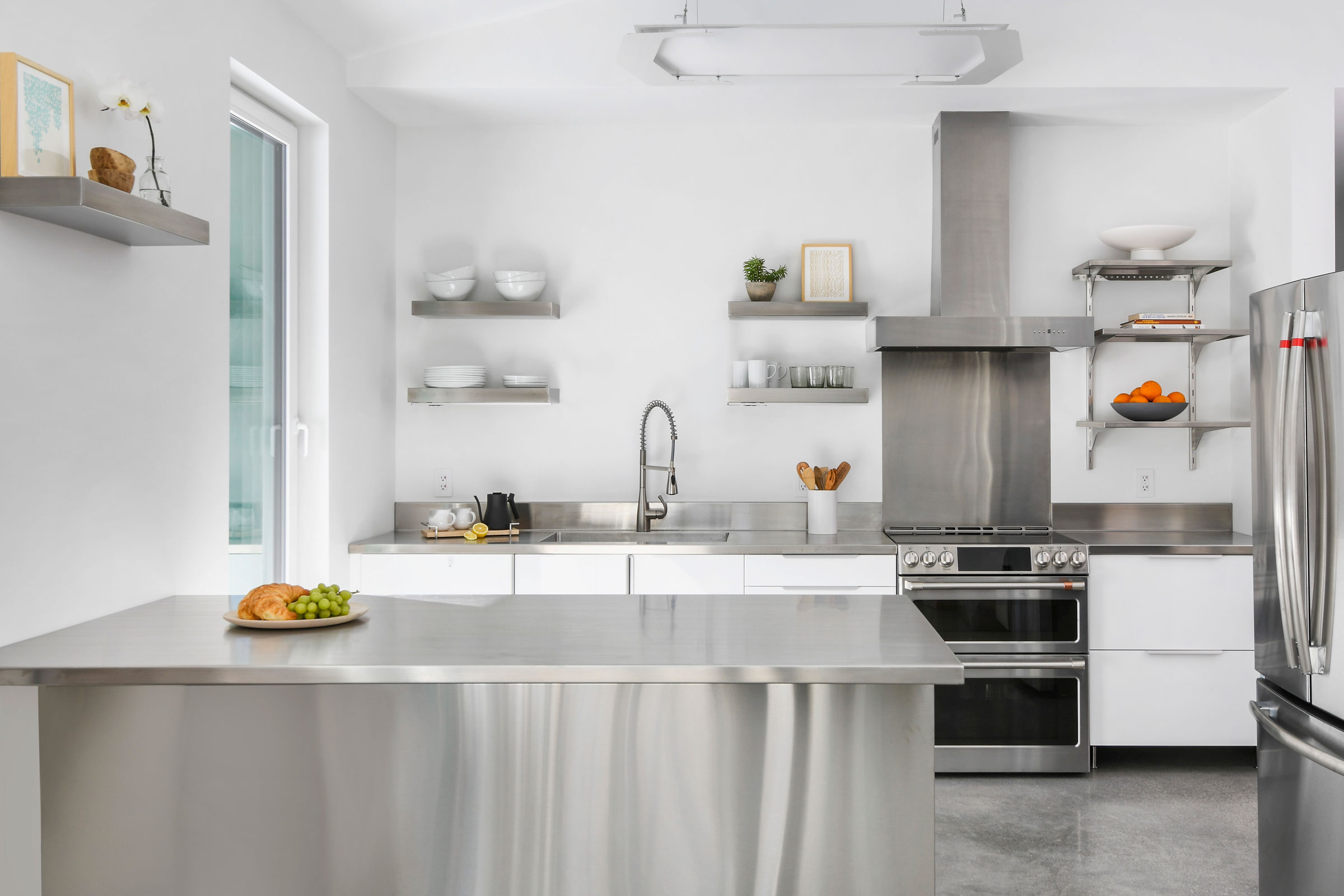
The range hood over this stove helps remove indoor air pollutants produced during the cooking process. Photo by Nat Rea
Cooking is a common cause of indoor air pollution—one that produces everything from odors and steam to smoke and other combustion byproducts. Both electric and gas stoves emit varying levels of carbon monoxide and nitrogen dioxide during their operation.
Installing a high-performance, energy-efficient range hood—which is really just a type of exhaust fan—over the stove and using it while cooking is the most effective way to remove these pollutants from the air. When switched on a range hood draws in cooking-related pollutants and then exhausts them outside through a vent.
6. Vacuum & Dust Regularly
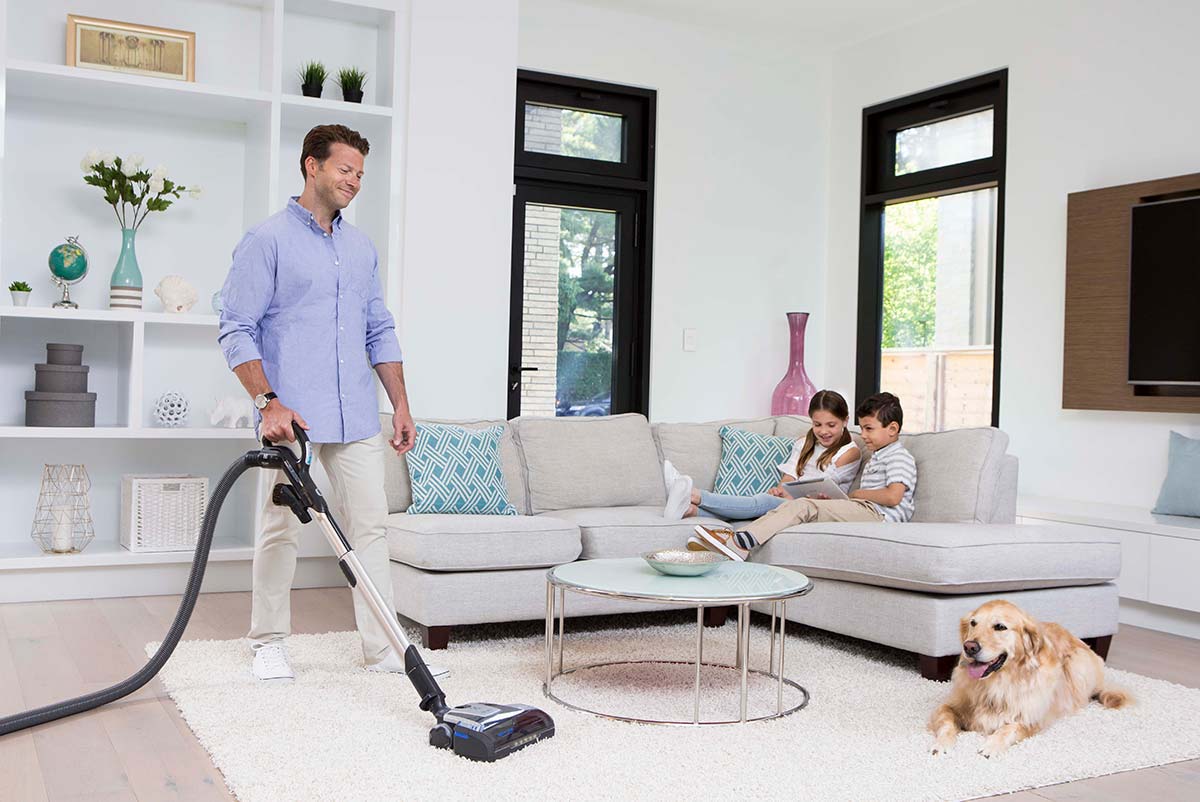
Central Vacuum Systems like those of BEAM make it easier than ever to clear the air. Photo courtesy of BEAM
Particulate matter is the most common category of pollutant found indoors and manifests primarily as dust. Most residential dust is a mixture of dead skin cells, dust mites, pollen, soil particles, hair, clothing fibers, microplastics, and other microscopic particles—all of which can irritate the respiratory system when inhaled.
Dust naturally accumulates over time, but some surfaces attract and hold onto dust better than others; carpeted floors and rugs, for example, easily collect dust and re-release small particulates into the air each time someone sets foot on them. Regular vacuuming and periodic deep-cleaning of carpets and rugs can help prevent dust buildup, as can regularly wiping down hard surfaces with a damp microfiber cloth.
Air ducts can also accumulate dust, dirt, dander, and even mold, reducing the efficiency and quality of interior air circulation, which is why the National Air Duct Cleaners Association recommends having a professional clean out air duct systems every few years.
7. Install an HVAC UV-C Lamp

The Charlotte of the Upper West Side housing and retail development in Manhattan is one of the first residential buildings in New York to UV-C light throughout its mechanical ventilation systems. Photo by Joshua McHugh
Installing an HVAC UV-C lamp is another way to prevent airborne viruses, fungi, bacteria, and other illness-causing microorganisms from circulating throughout an indoor space. Ultraviolet, or UV, light has gained popularity as a disinfectant, especially in the wake of the SARS-CoV-2 global pandemic.
“The advantages of disinfecting lighting are it is environmentally friendly, rapidly kills anti-microbials within seconds, and does not create any resistance,” Dianne Dunnell, director of interior design at Margulies Perruzzi, previously wrote for gb&dPRO.
Germicidal UV light is categorized by various intensities, with UV-C light being the strongest, emitting radiation at a level between 185 and 254 nm. UV-C lamps break down the DNA/RNA of germs, destroy the nucleic acid in bacteria, and functionally prevent cell replication in other microbes, rendering them harmless. Because direct exposure to UV-C light is harmful to humans, UV-C lamps are best installed in HVAC systems where they can sterilize the air before it is circulated throughout a building.
8. Invest in a Dehumidifier

Inside the Indiana Street House, designed by Studio 804. Photo by Gaffer Photography
High humidity levels in an interior space can negatively impact air quality as a result of excess moisture in the air. Eliminating humidity altogether isn’t ideal as some ambient moisture is needed to prevent nosebleeds, coughing, and dry skin, but too much moisture can exacerbate asthma, allergies, and other respiratory conditions, as well as lead to mold and mildew growth. When partnered with high temperatures, excessive humidity can also increase VOC off-gassing, which is why relative humidity levels should be kept between 30 and 50%, according to the EPA.
If you live in an exceptionally humid region or are dealing with moisture problems beyond your control, investing in a dehumidifier can help bring indoor humidity levels to that recommended level. Dehumidifiers work by drawing air in through a fan, passing said air over condenser coils to cool it down, contracting it, and then blowing warmer, dryer air back into the room.
Portable dehumidifiers collect the leftover condensation in a drawer that must be periodically emptied, while fixed dehumidifiers typically empty the leftover condensation through a hose leading outdoors. When choosing a dehumidifier, take care to consider just how much moisture it will need to contend with on a daily basis to ensure that it will operate effectively, as different models perform at different levels.
9. Change HVAC Filters Regularly
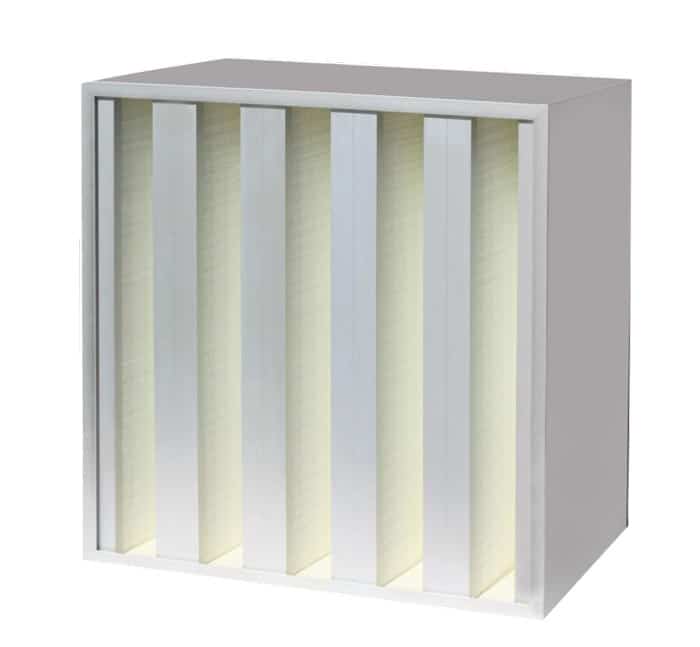
HEPA and ULPA filters are able to remove at least 99.97% of sub-2.5-micron particles. Photo courtesy of Filtration Group-HVAC
Another easy way to improve and maintain indoor air quality is to routinely change HVAC system air filters. Most HVAC companies and air filter manufacturers recommend changing your HVAC unit’s air filter every 30 to 90 days, but very few people actually adhere to this schedule, resulting in excessive filter buildup that ultimately weakens the filter’s ability to trap small particulate matter.
Changing your HVAC filters at the manufacturer’s recommended intervals is an incredibly simple, low-cost way to improve indoor air quality and ultimately helps your HVAC system run more efficiently. It’s also a good idea to use high-efficiency filters in your HVAC system, with most experts recommending filters with at least a MERV 13 rating.
10. Keep Indoor Burning to a Minimum

Fireplaces, gas stoves, and other fuel-burning appliances or systems are a common source of indoor air pollution. Photo courtesy of The Industrialist
Indoor burning, or residential combustion, removes oxygen from the air and replaces it with gasses and particles like carbon monoxide, carbon dioxide, sulfur dioxide, and other harmful compounds. When inhaled in high concentrations and/or for long periods of time, the airborne byproducts of residential combustion activities can lead to the development of cardiovascular and respiratory diseases.
Keeping these activities—e.g. lighting candles or incense, smoking, using the fireplace, gas stoves, or any other fuel-burning systems—to a minimum, or eliminating them altogether, will help improve indoor air quality.
Reducing indoor burning may not be as feasible in buildings that rely on a furnace for their heating purposes, but steps can be taken to decrease the amount of indoor pollutants they emit. Using MERV 13 rated furnace filters, for example, will help trap at least 85% of all particles sized 1.0 micron and larger—and at least 50% of particles in the 0.3 to 1.0 micron range—without restricting airflow. Changing these filters every three to six months will help ensure efficient operation.
11. Seal Leaks & Gaps
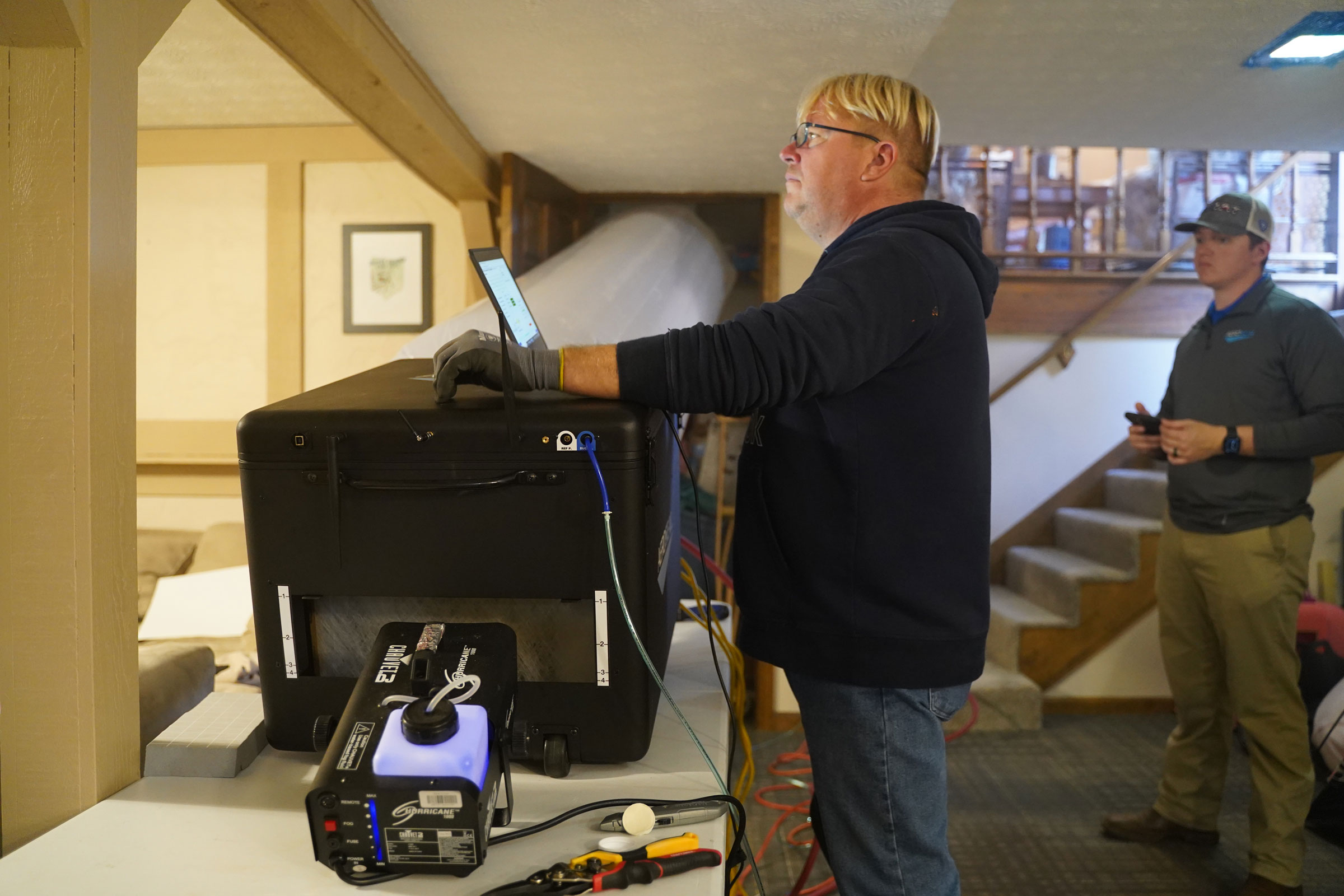
Photo courtesy of Aeroseal
Leaks and gaps in a building’s envelope are a major source of energy waste, but also allow moisture and particulates like dust and pollen to enter, adding to interior air pollution. Locating and sealing up these areas of intrusion—such as around windows and doors, in attics and basements, around outlets and plumbing, et cetera—can significantly increase indoor air quality by reducing the risk of hidden mold growth while also reducing stress on existing ventilation systems.
Aeroseal offers comprehensive air sealing solutions for existing buildings that are both convenient and non-invasive. “Aeroseal employs a fog-like aerosol substance that, when introduced into ductwork and pressurized, effectively seals leaks from the inside without the need for external interventions,” Bob Swilik, vice president of product strategy at Aeroseal, told gb&d in a previous interview.
12. Install & Use Exhaust Fans
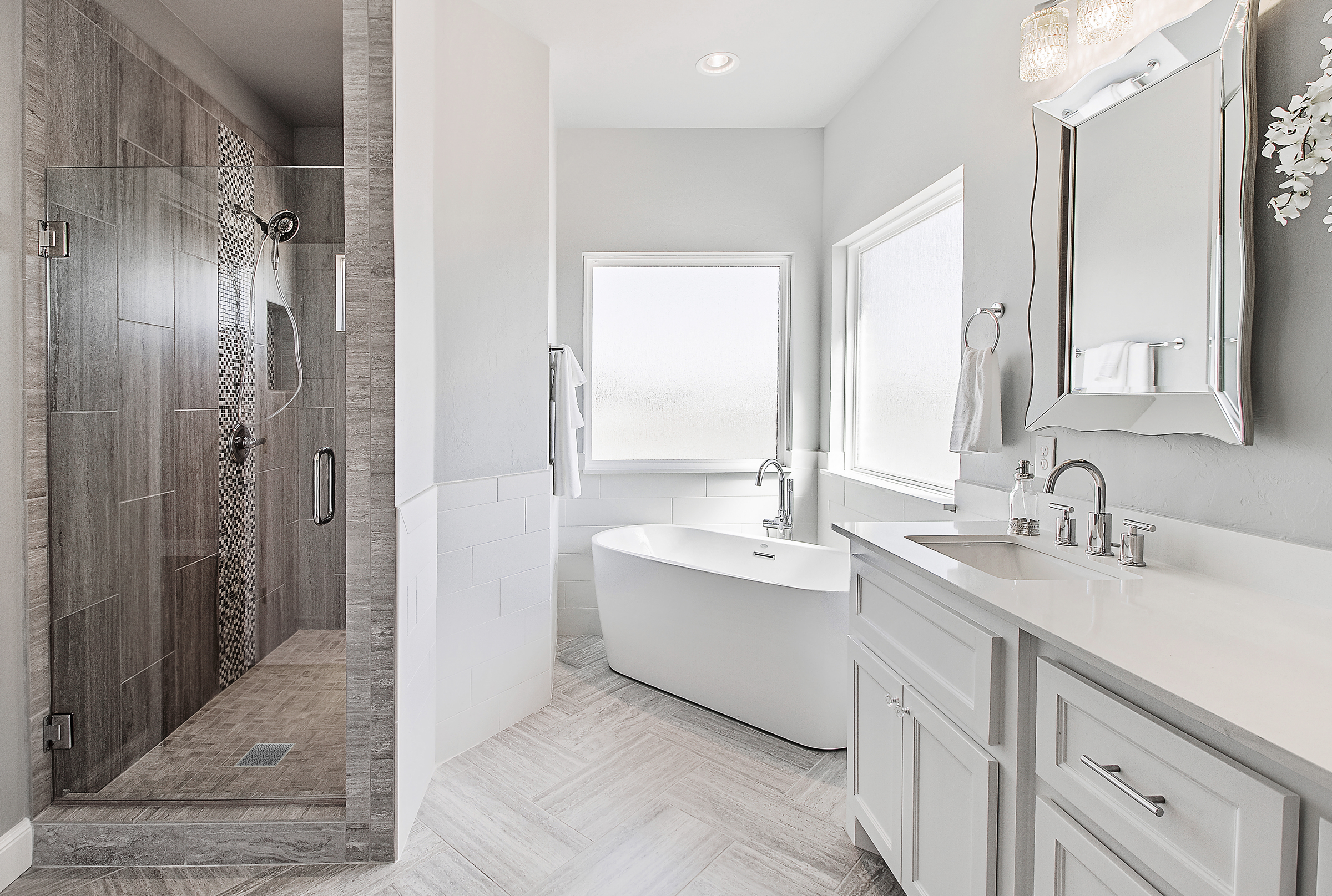
Using exhaust fans while bathing or showering can help remove excess moisture and prevent mold and mildew growth. Photo courtesy of Oatey
An easy way to avoid mold and mildew growth in high-moisture areas—bathrooms, for example—is to install and use an exhaust fan. Most residential homes already have exhaust fans inside their bathroom(s), which serve to expel humid air produced when bathing or showering.
In order to ensure maximum moisture removal, the American Lung Association recommends running exhaust fans for 30 to 45 minutes after bathing. Installing a new exhaust fan or replacing an old fan with an energy-efficient alternative—such as those bearing the ENERGY STAR label—will not only help improve indoor air quality, but will also help reduce energy consumption as well.
13. Test for Radon
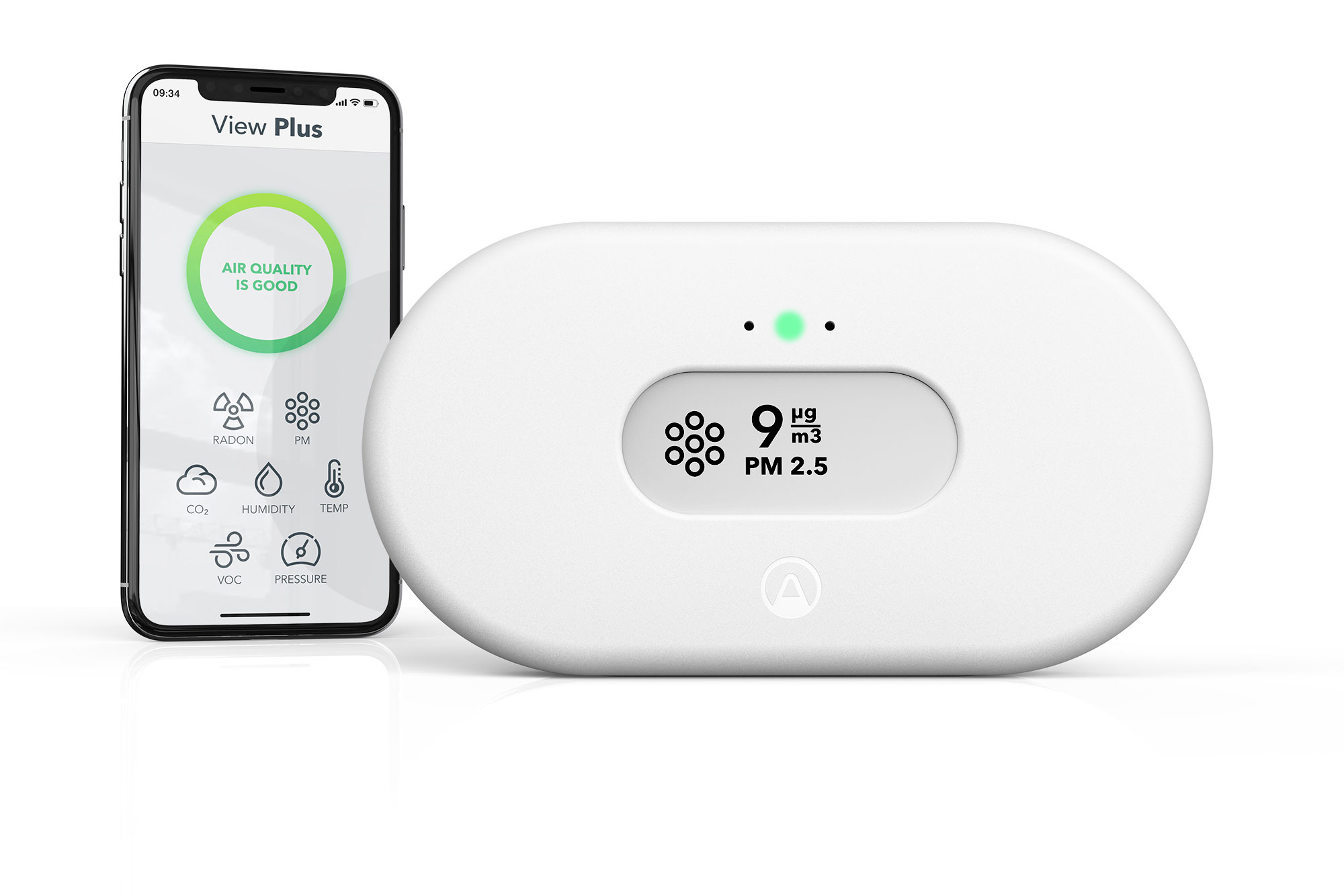
The View Plus air quality monitor includes a built-in display and sensors for radon, particulate matter (PM), carbon dioxide (CO2), humidity, temp, airborne chemicals (VOCs), and air pressure. Photo courtesy of Airthings
As previously mentioned, radon is a rarer—but no less serious—source of indoor air pollution that can have severe health implications if left unchecked. If you’re worried about the possibility of being exposed to radon without knowing it, you can order a low-cost radon test kit from the American Lung Association to verify whether radon is present or not.
If the test fails to detect radon, you don’t need to worry about contracting radon poisoning—but should the test show that radon is present, however, you’ll want to look into having a radon mitigation system installed. There’s no way to get rid of the gas entirely, but a properly-installed radon mitigation system will lower the amount of radon to EPA acceptable levels (below 4.0 pCi/L) and reduce the chance of developing radon poisoning to near zero.
Airthings carries an all-in-one product called the View Plus which features a built-in display and sensors for measuring radon levels, as well as carbon dioxide, VOCs, air pressure, humidity, temperature, and particulate matter.
14. Install & Maintain Carbon Monoxide Detectors
While you may not think about them as such, carbon monoxide detectors are just as much a means of maintaining indoor air quality as they are means of ensuring occupant safety. Like radon, carbon monoxide is a colorless, odorless, and tasteless gas that, if inhaled in large amounts or for a prolonged period of time, can result in carbon monoxide poisoning that may lead to severe injury or even death.
Carbon monoxide is produced as a result of incomplete combustion and can accumulate in buildings as a result of poorly ventilated or incorrectly installed appliances—namely stoves and hot water heaters—or due to poorly ventilated fireplaces and other fuel-burning systems. Installing carbon monoxide detectors and keeping them in proper working order is one of the simplest ways to verify whether CO is present in large quantities, after which steps may be taken to remedy the issue.
15. Incorporate Plant Life

Plants can help improve indoor air quality by producing oxygen and raising a room’s relative humidity. Photo courtesy of Ambius
Properly implemented vegetation can also help improve indoor air quality. This is largely due to plants’ ability to convert carbon dioxide into oxygen as well as their ability to raise the relative humidity of a space.
“In addition to enhancing moods, reducing stress and fatigue, and improving one’s overall well-being, a high number of larger plants that are actively growing can help raise the relative humidity level in certain environments,” Matthew Kostelnick, senior horticulturist for Ambius, previously told gb&d. “By increasing the relative humidity level, plants can have a relaxing effect on people, reduce dust, and remove allergy-inducing particles. Specifically, larger plants that are actively growing—like dracaenas, palms, ficus, ferns, et cetera—can help raise humidity levels and help with air quality due to a high level of metabolism and photosynthesis.”
Plants can be integrated into interior spaces via pots or using more involved solutions like living walls, like those offered by Ambius. Ambius is a global leader in providing innovative indoor vegetation solutions, especially when it comes to vertical planting surfaces and living walls.




